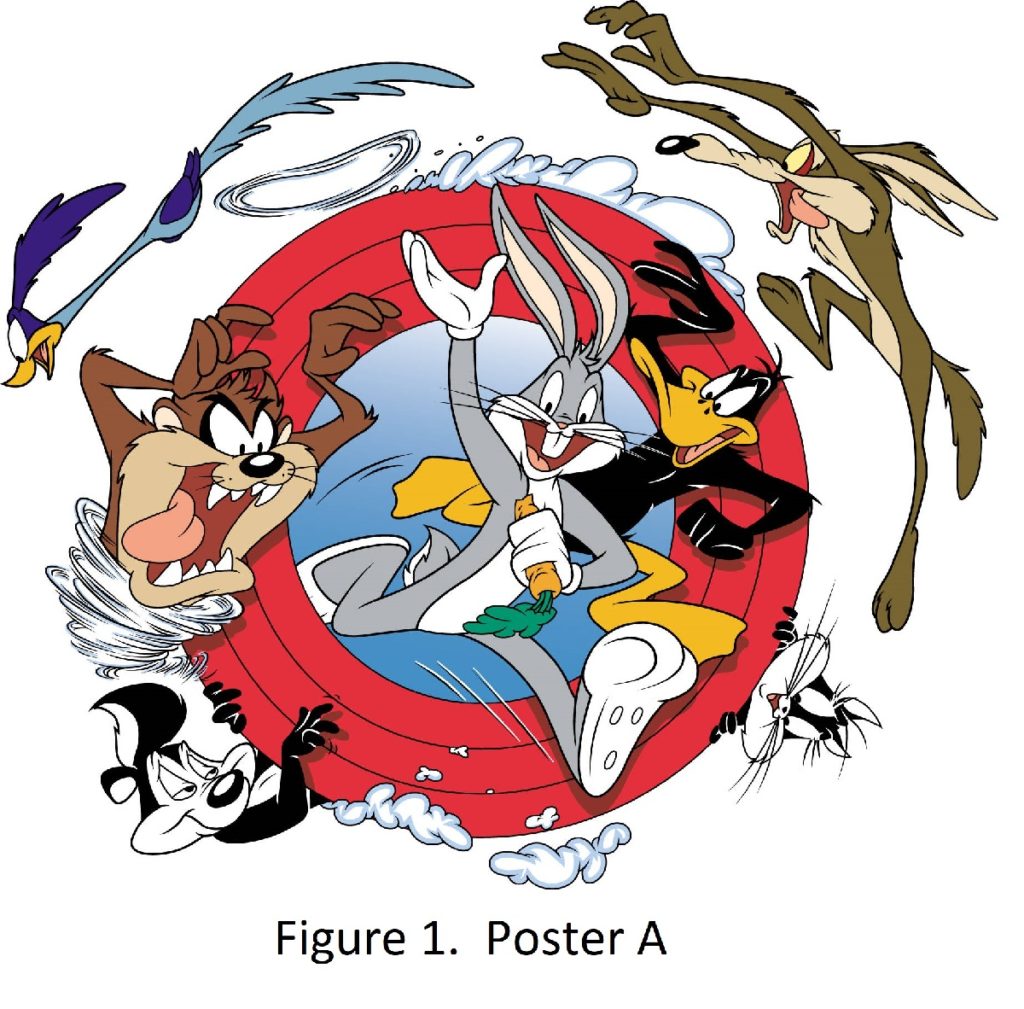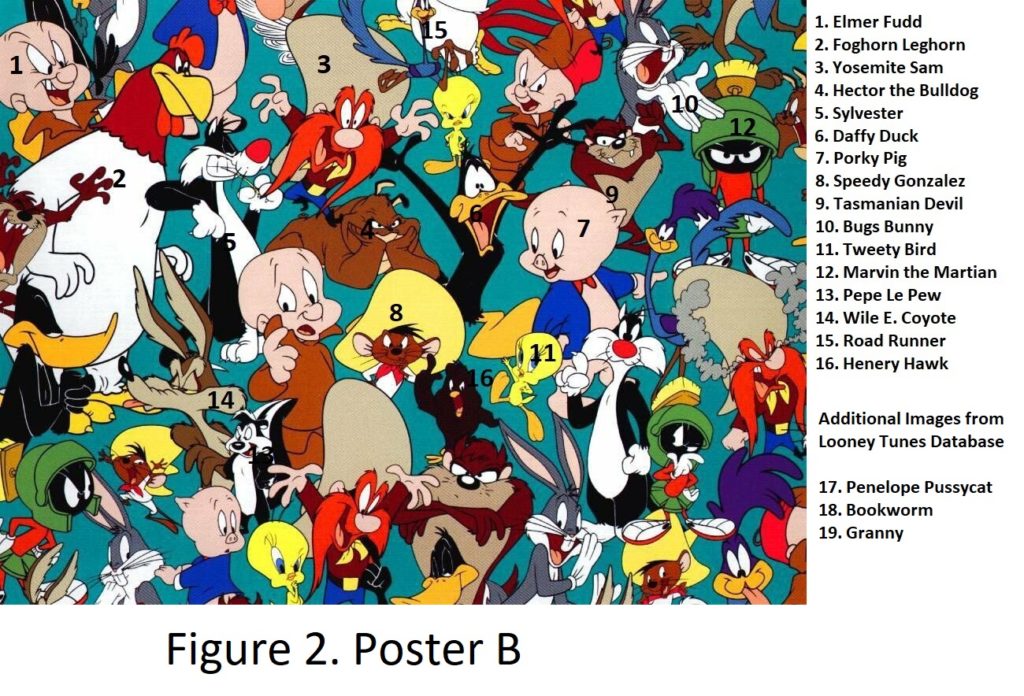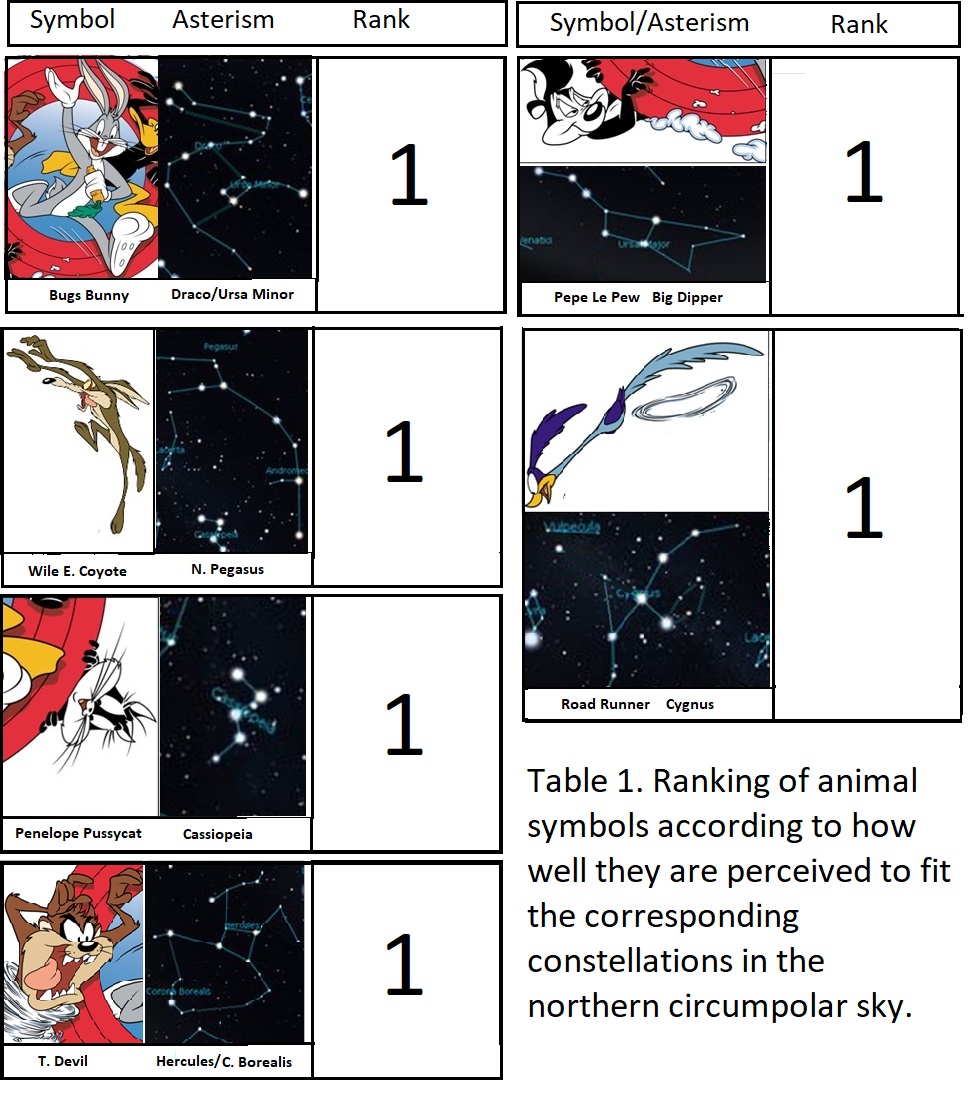 Acknowledgements: I am grateful to Martin B. Sweatman and Dimitrios Tsikritsis for inspiring this research, and modelling the interpretive and statistical methodology with their work on Gobekli Tepe.
Acknowledgements: I am grateful to Martin B. Sweatman and Dimitrios Tsikritsis for inspiring this research, and modelling the interpretive and statistical methodology with their work on Gobekli Tepe.
We provide an interpretation of much of the symbolism of the Looney Tunes iconography, based entirely on the statistical correlation between LT symbols and corresponding astronomical facts. We find the LT symbolism provides strong support for predictive tracking of failed NEO (Near Earth Object) impacts, and hence for a high-level conspiracy to keep the truth from the people of Earth.
LT Characters as Asterisms
We start with the hypothesis that the LT images represent constellations, and that some of their configurations are reasonably accurate “maps” of portions of the night sky. However, it is clear that not all configurations can be understood as star maps. Instead, the zoomorphs (and some anthropomorphs) are symbols representing constellations, that can be used flexibly to convey different ideas. And as they are symbols that can be used flexibly, they can be thought of as a kind of crypto-script conveying coded messages that require careful scientific decipherment.
As they are central to this work, we will describe in detail two key images from the Looney Tunes database. Critical to unlocking the astronomical code is Poster A (Fig.1), clearly a representation of the circumpolar sky with associated asterisms. Seven animals are pictured: a bunny is in the centre, closely associated with a duck. The remaining five are ranged around the perimeter: coyote, kitty, skunk, charging predator, and horizontally extended bird. From complementary folkloric material, we can identify these, respectively, as Bugs Bunny, Daffy Duck, Wile E. Coyote, Penelope Pussycat, Pepe Le Pew, the Tasmanian Devil, and Road Runner.
Poster B (Fig.2) presents a mass of similar figures, crowded densely enough so that many overlap. Sixteen individuals can be discerned, with several repetitions of each; six of the zoomorphs also occur on Poster A. Identifications based on folkloric data are included in Fig.2, along with three other relevant identifications. Though a sky-coloured background is visible among the figures, this poster is clearly not a specific star map, but no doubt confers another as-yet-undeciphered layer of meaning onto the asterisms portrayed.
Interpretations of LT Symbolism in Poster A
We begin by noting the centrality of Bugs Bunny, a dominant figure in the LT pantheon, and the excellent fit of five of the other six figures to well-known circumpolar constellations (Table 1). The bunny closely matches Draco enfolding Ursa Minor, with the latter representing the carrot in the bunny’s hand, and Polaris coinciding with the bunny’s big toe. [Note: some of the arbitrary lines joining stars in certain asterisms have been adjusted for the sake of clarity.]
Moving clockwise around the perimeter, we find that Wile E. Coyote is an excellent match for the northern asterism of Pegasus, Penelope Pussycat for Cassiopeia, Pepe Le Pew for the Big Dipper portion of Ursa Major, the Tasmanian Devil for Hercules plus Corona Borealis (representing the Devil’s trademark whirlwind), and Road Runner for Cygnus.
This leaves us, however, with a problem: Daffy Duck, pictured beside Bugs/Draco/Ursa Minor on Poster A, is not a particularly good match for the constellations in that approximate location, Cepheus and Lacerta, tentatively identified on other evidence as Yosemite Sam and the Bookworm. What is the meaning here? Could Poster A be recording an occasion when Cepheus and Lacerta were symbolically occluded by some other celestial body, represented by Daffy Duck?
To answer this question, we can employ the hypothesis that a primary function of LT iconography was to predict/record close approaches by Near Earth Objects. Consider the duck. Daffy represents the cultural archetype of the Hubristic Loser, conniving, ambitious, and narcissistic, whose cunning plans for domination are continually being frustrated. What better symbol could there be for an asteroid or comet fragment that passes close to Earth without managing to effect a catastrophic impact? Even the name is suggestive: Earth “ducks” disaster by a narrow margin.
If such an event can be identified, then it is reasonable to assume that Daffy Duck is a generic symbol for failed NEOs, and that Poster A is in fact providing a date-stamp for a catastrophe that did not happen. The prime candidate is Asteroid 2014 KH39, which passed within 1.1 LD of Earth on 3 June 2014, and was primarily observable in the constellation Cepheus. The fact that Poster A itself dates from pre-1990, some thirty years before the non-event, suggests that Looney Tunes is privy to the NASA-led conspiracy to “hide the truth in plain sight” regarding outer space, and that the Earth may indeed be flat.
Statistical Test
Our hypothesis is that the Looney Tunes character images (minus Daffy Duck) usually represent star asterisms, and their arrangement on Poster A, in combination with Daffy Duck, is used to represent the date 3 June 2014. We test this hypothesis by statistically determining whether there is a better fit for the circumpolar asterisms than the one currently proposed. The probability that Poster A does not represent the stated asterisms is (P+1)/Q, where P is the number of permutations that work better than the configuration suggested, and Q is the number of all possible permutations.
The value of Q is Xn, where X is the pool of LT characters to draw from, and n=6, the number of images we consider on Poster A. From Posters A and B and some additional images, we count eighteen characters that may have substituted for the six under consideration (See Figure 2). Hence, Q is around 34 million.
To eliminate any permutations where two or more characters of the same kind would occur on Poster A, we can calculate Q as 6! multiplied by the binomial coefficient C618, which equals about 13.3 million.
P is the number of better symbols for each position on Poster A. According to our rankings (see Table 1), all characters on Poster A were the closest match possible, therefore (P+1)=1. We therefore conclude that the probability that Poster A does not represent the date 3 June 2014 is around one in 34 million, or one in 13.3 million if we rule out permutations with repeated symbols on Poster A. Considering these odds, it seems extremely likely that Poster A does indeed represent the date 3 June 2014. Furthermore, we can rule out any other possible interpretations of the LT iconography, including any suggestion that the images are merely cartoon characters.
References
Bradley, Rebecca, GOBEKLI TEPE, PART 4: ANIMALS AND ASTRONOMY, Lateral Truth, 18 November 2018.
Bradley, Rebecca, GOBEKLI TEPE: RESPONSE TO MARTIN SWEATMAN, Lateral Truth, 6 December 2018.
Sweatman, Martin B., Response to Rebecca Bradley at ‘The Lateral Truth’ regarding Gobekli Tepe and the Fox paper by Sweatman and Tsikritsis, Prehistory Decoded, 20 November 2018.
Sweatman, Martin B. and Dimitrios Tsikritsis, DECODING GÖBEKLI TEPE WITH ARCHAEOASTRONOMY: WHAT DOES THE FOX SAY? Mediterranean Archaeology and Archaeometry, Vol. 17, No 1, (2017), pp. 233-250.
Sweatman, Martin B. and Alistair Coombs, Decoding European Palaeolithic Art: Extremely Ancient knowledge of Precession of the Equinoxes, Athens Journal of History, online journal, 2 November 2018.



